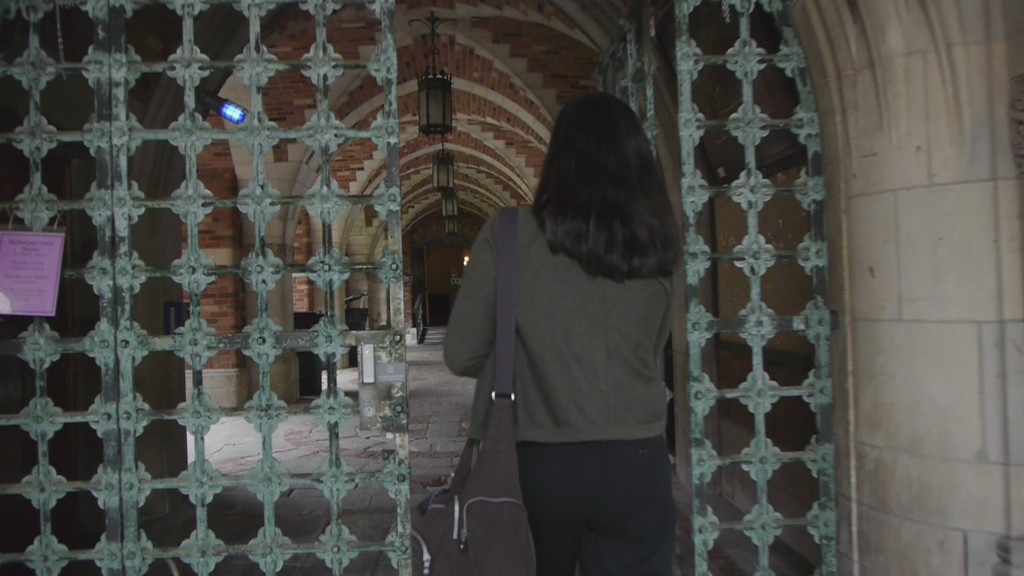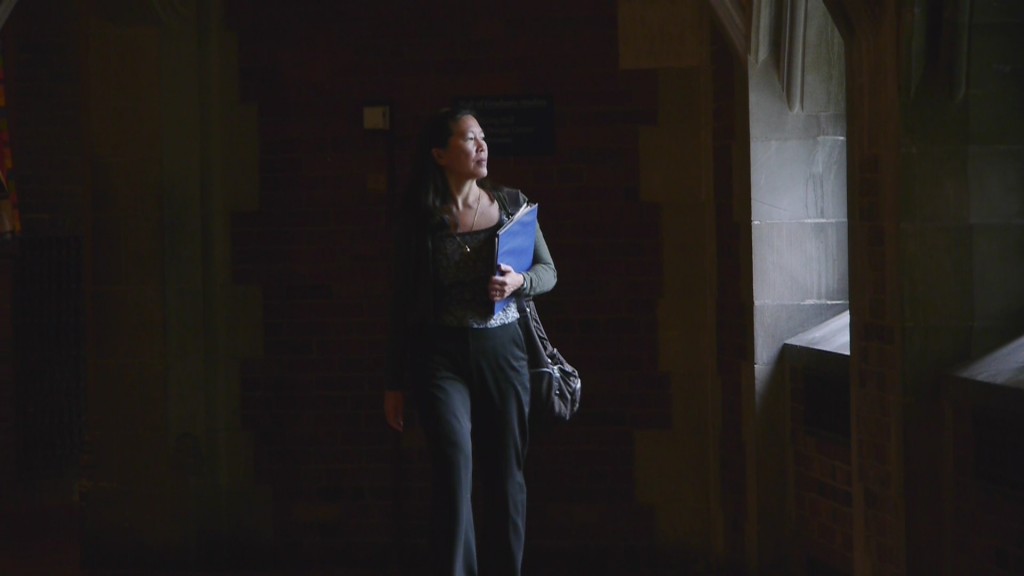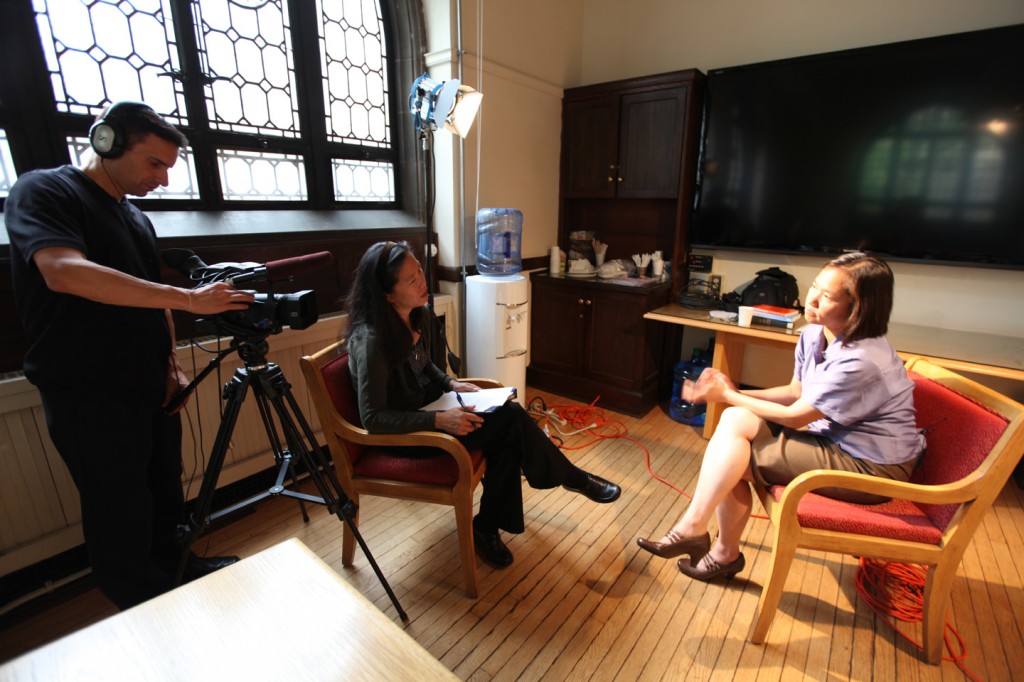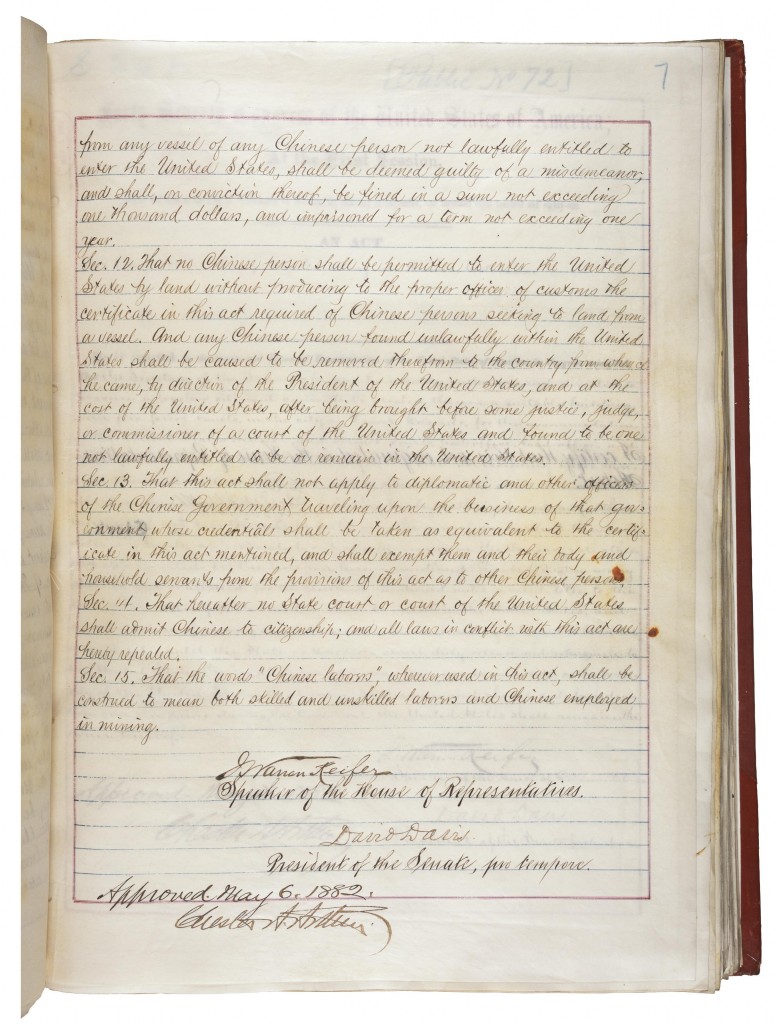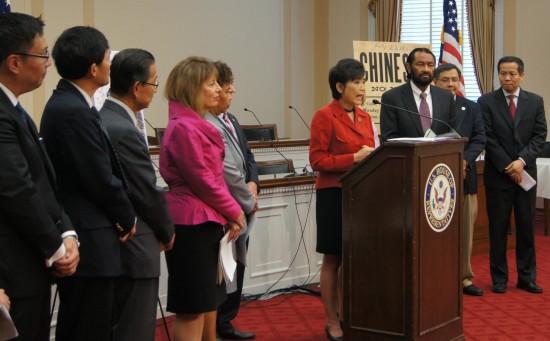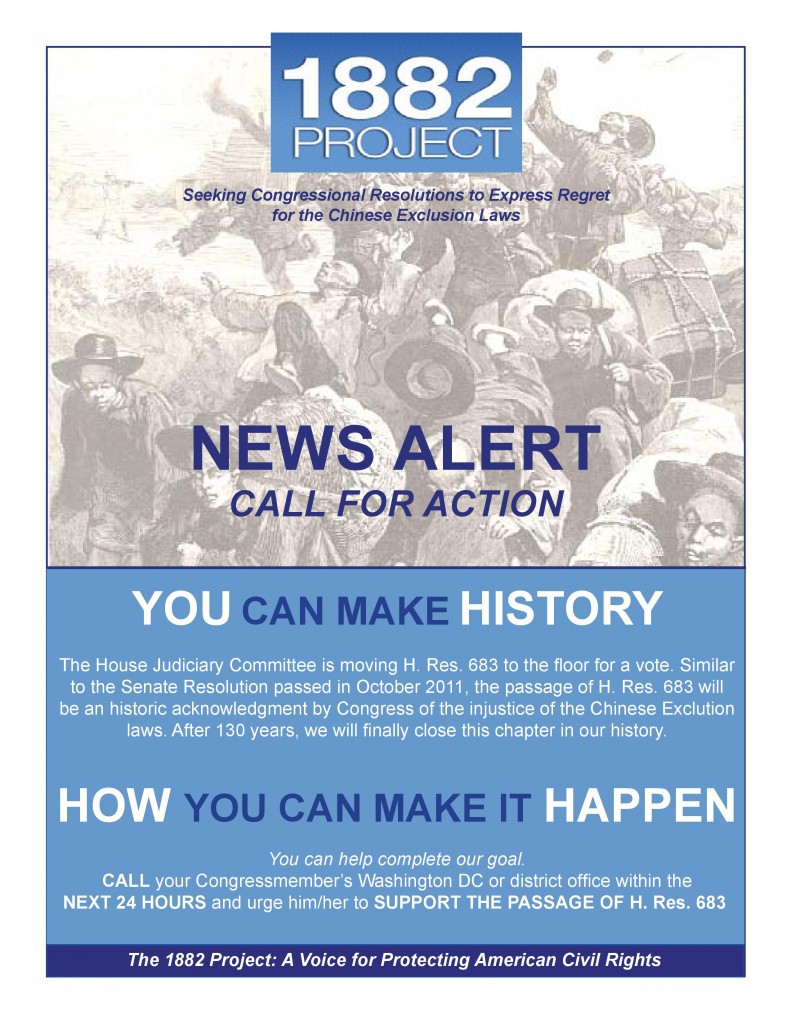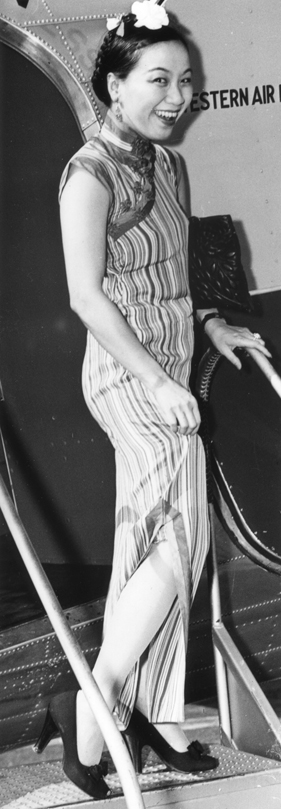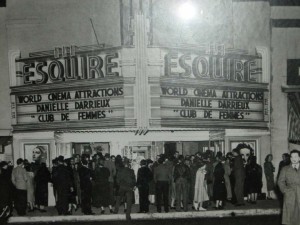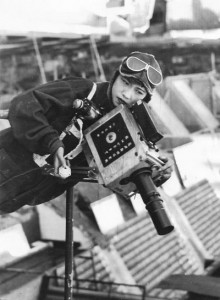Upcoming Screenings:
no event
Follow us on Facebook
HELP BRING FINDING KUKAN TO CLASSROOMS
Sign up for our mailing list.
Tag Archives: Li Ling-Ai
June 28, 2012 — A Visit to Yale and Chinese Exclusion
The recent FINDING KUKAN shoot at Yale University brought out the perpetual student in me. You can’t help but be awed by the vaulted ceilings and Knights of the Round Table atmosphere of the Hall of Graduate Studies where my interview with Yale Professor of American Studies Mary Lui took place.
The building reminds you how much history has come before you and how much you are ignorant of.
Fortunately the halls of learning at Yale are populated by people like Mary who dedicate their lives to gathering knowledge and disseminating it to people like me.
In trying to understand the social climate that prompted Li Ling-Ai and Rey Scott to risk money and life to make KUKAN, Mary Lui reminded me that the behavior of Chinese Americans like Li Ling-Ai was still governed in part by prejudicial immigration laws enacted against the Chinese — the most infamous one being the Chinese Exclusion Act passed in 1882.
Meant to keep cheap labor from entering the US, the exclusion laws ended up doing much more than that. From restricting the formation of Chinese families, to rendering the few Chinese women around at the time exotic creatures with questionable backgrounds the Exclusion Laws had negative repercussions on even the richest and most educated Chinese Americans. It’s no wonder that with so few Chinese Americans around that stereotypes and misconceptions about them would form.
I came back to Hawaii much better prepared to appreciate the historic bill recently passed by Congress to officially apologize for the prejudicial laws that targeted Chinese and other Asians in America for over 80 years.
One of the stereotypes I had about my own ethnic background was that Chinese don’t make waves and passively accept their fate, letting bygones be bygones.
The courageous efforts of people like Congresswoman Judy Chu and organizations like the 1882 Project belie that stereotype and bring a new validation to the history of Asians in America that will hopefully prompt more stories about an era of exclusion that we still don’t know enough about.
Are there ways that exclusion laws have affected your life? Let us hear from you.
February 15, 2012 — A Fashion Interlude
Recently I had the good fortune of meeting one of Ling-Ai’s nieces who had saved many of Ling-Ai’s papers and possessions. I am currently poring through documents and pieces of paper, looking for clues that tell more about the making of KUKAN. It can be a tedious job. So I took an afternoon off to explore some of Ling-Ai’s fashion accessories that had been painstakingly packed away. Ling-Ai had an obvious flair for fashion. And the vintage clothes lover in me went gaga as I opened this eye-catching tres MOD turquoise hat box.
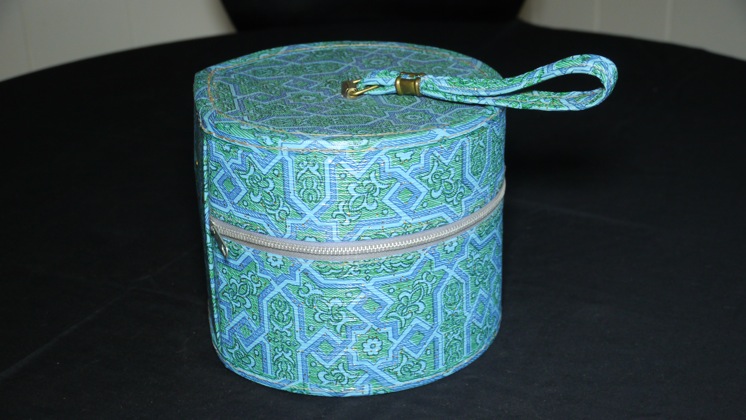
Li Ling-Ai’s Mod Turquoise Hat Box could be a fashion accessory in itself
The contents of the box did not disappoint. I discovered three exquisitely crafted little numbers. A pink brocade small saucer hat with a stunning plume was my favorite.
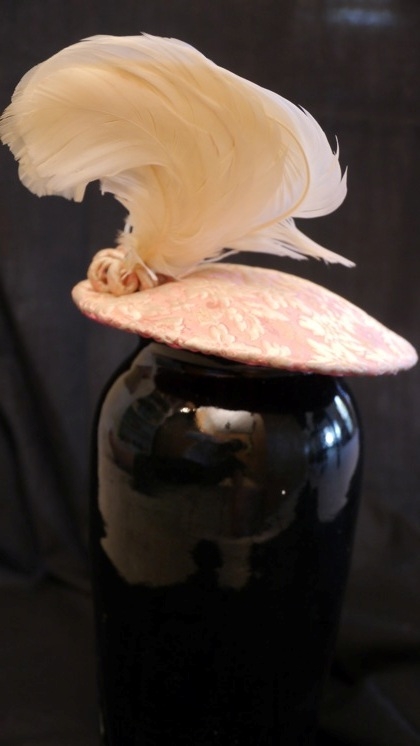
Plumed pink brocade hat by Nick Savage
I had a lot of fun imagining the type of occasion Ling-Ai chose to wear this hat to.
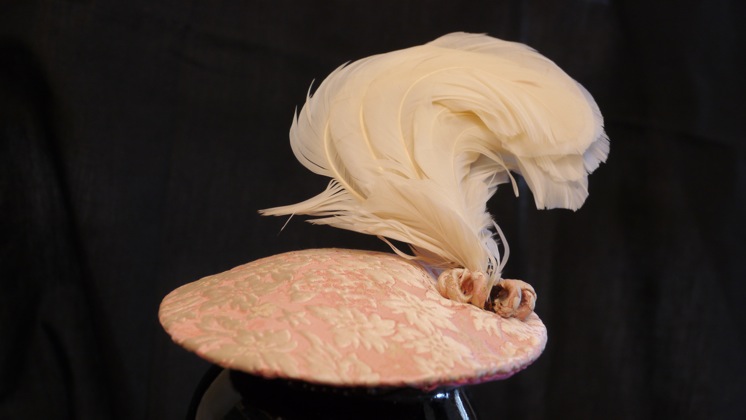
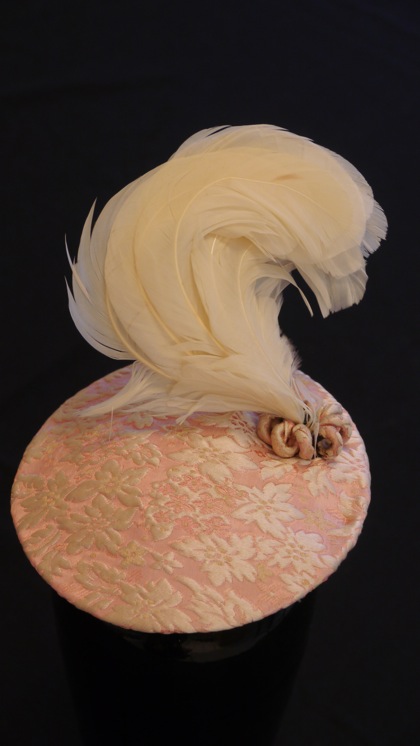
While photographing this hat, I noticed the amazing craftsmanship that went into it’s construction.
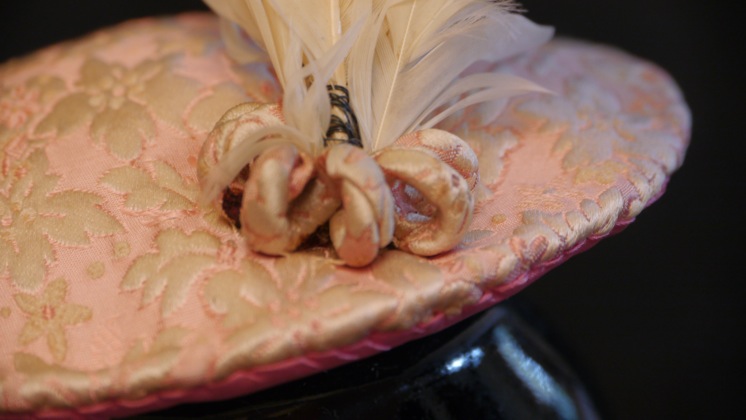
Detail of pink brocade hat.
A signed label was sewn into the inside lining of the hat. Nick Savage appears to be the talented milliner who made it.
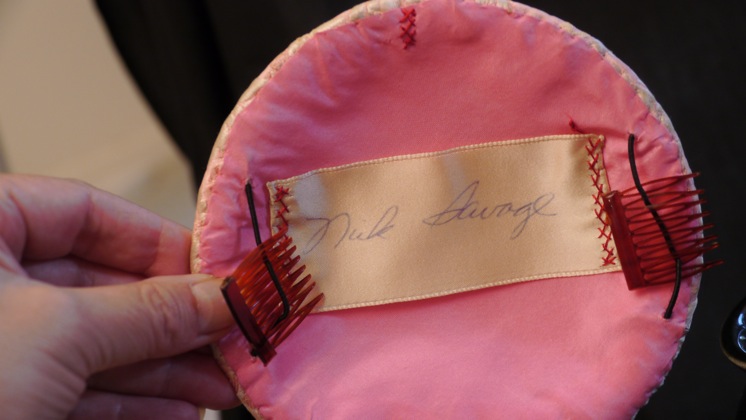
These next two pieces were also made by Nick. And are equally exquisite.
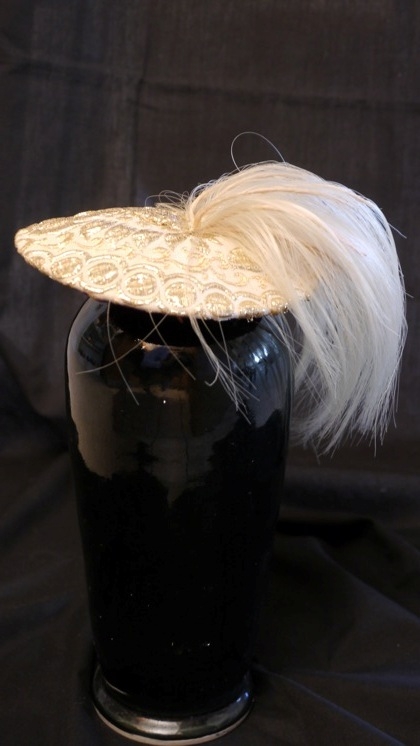
Gold ponytail hat by Nick Savage.Gold-banded camellia hat by Nick Savage
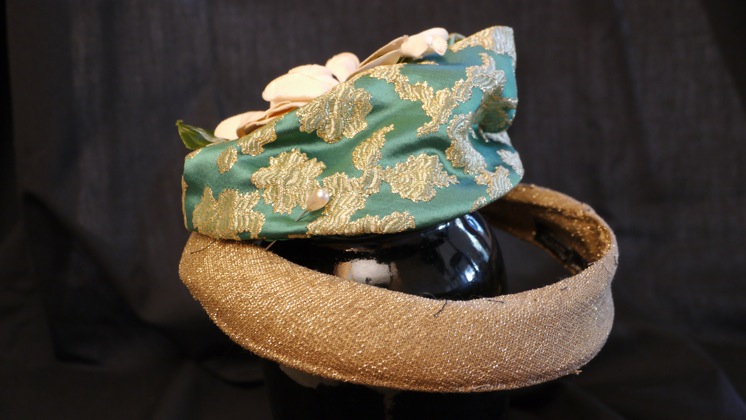
Gold-banded camellia hat by Nick Savage
The little details are marvelous. Check out the separate braided strands that start this gold pony-tail plume.
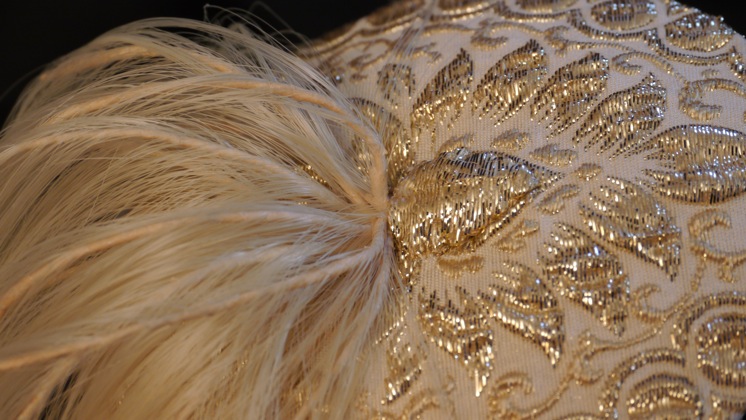
And the perfect positioning of the brocaded fabric.
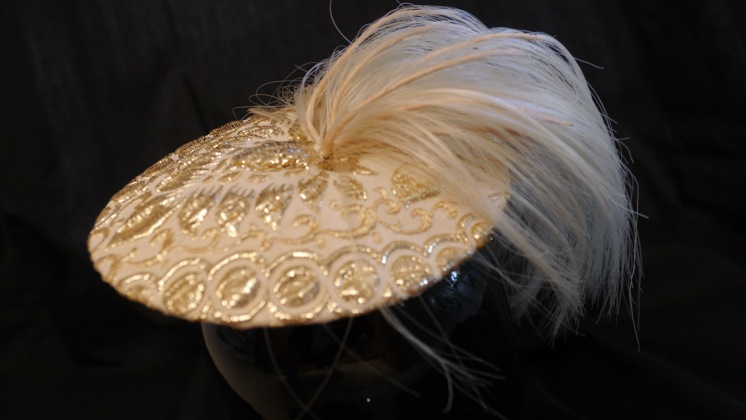
The camellia on this inventive piece was a little a squished, but I imagine it was pretty sumptious when Ling-Ai wore it back in the day.
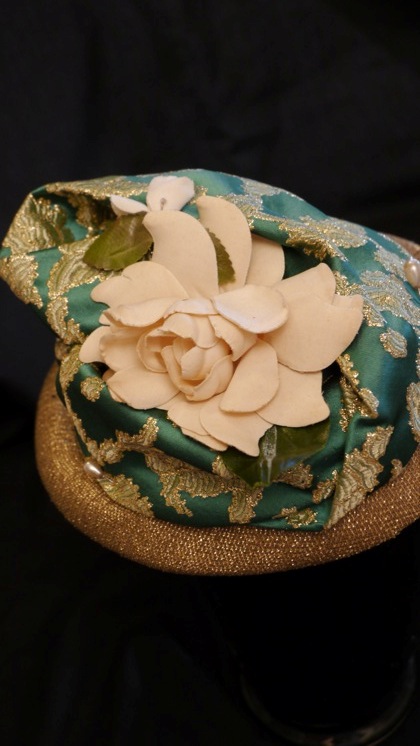
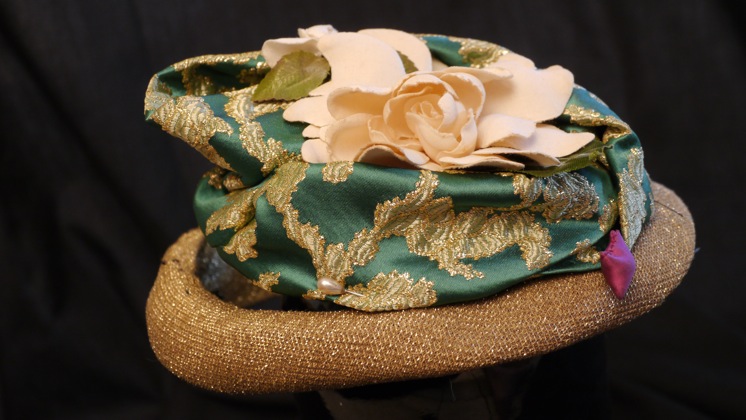
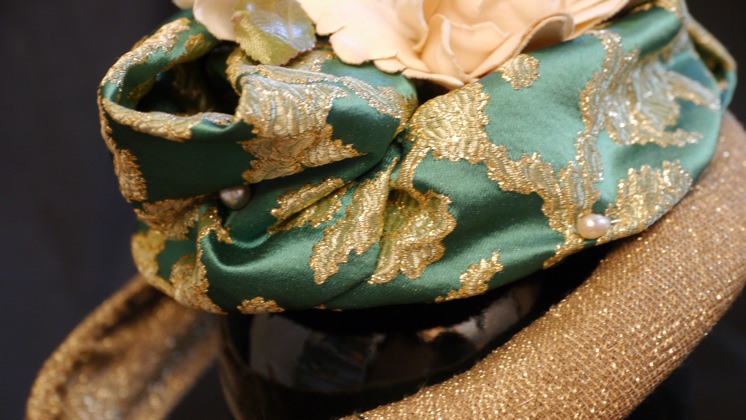
I couldn’t find any information on the internet about the talented Nick Savage. But I did find a little label in the inside of this camellia hat.
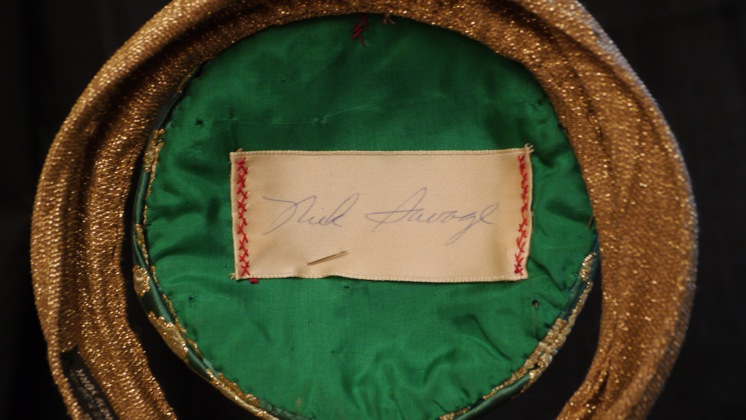
It had a New York City address — 350 East 50th Street — from Google Maps it looks to be a building just off Lexington Ave. If any fashionistas have any more information on him, please let me know. I have Mr. Savage’s millinery gifts, Li Ling-Ai’s fashion sense and her niece’s foresight to thank for a wonderful afternoon spent in a world of gamorous fantasy.
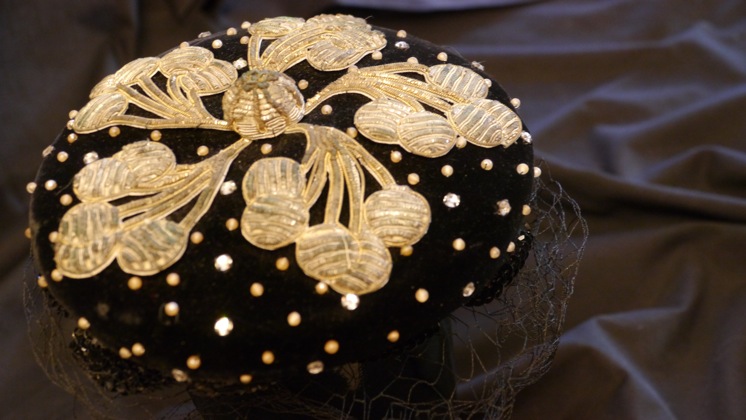
Black velvet rhinestone and pearl studded hat from Li Ling-Ai’s collection.
To top off my post I’ll leave with a few shots of another gorgeous topper in Ling-Ai’s collection (by an unknown maker).
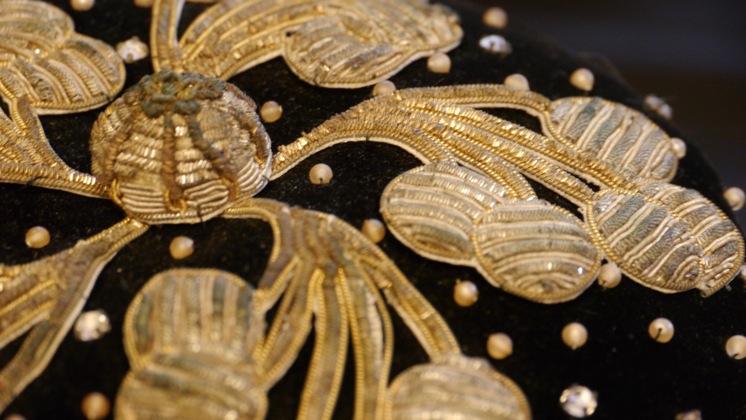
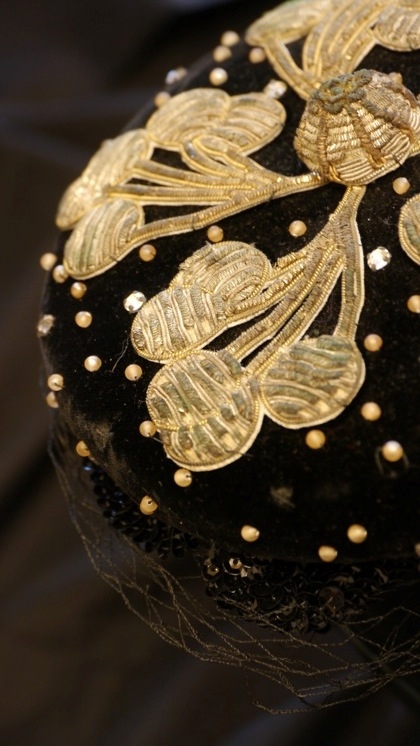
December 5–10, 2011 — LA Production Shoot
My main reason for traveling to LA was to interview Li Ling-Ai’s nephew Andrew Li who was a young boy of 8, living in Nanking when Rey Scott and Li Ling-Ai began pre-production for KUKAN.
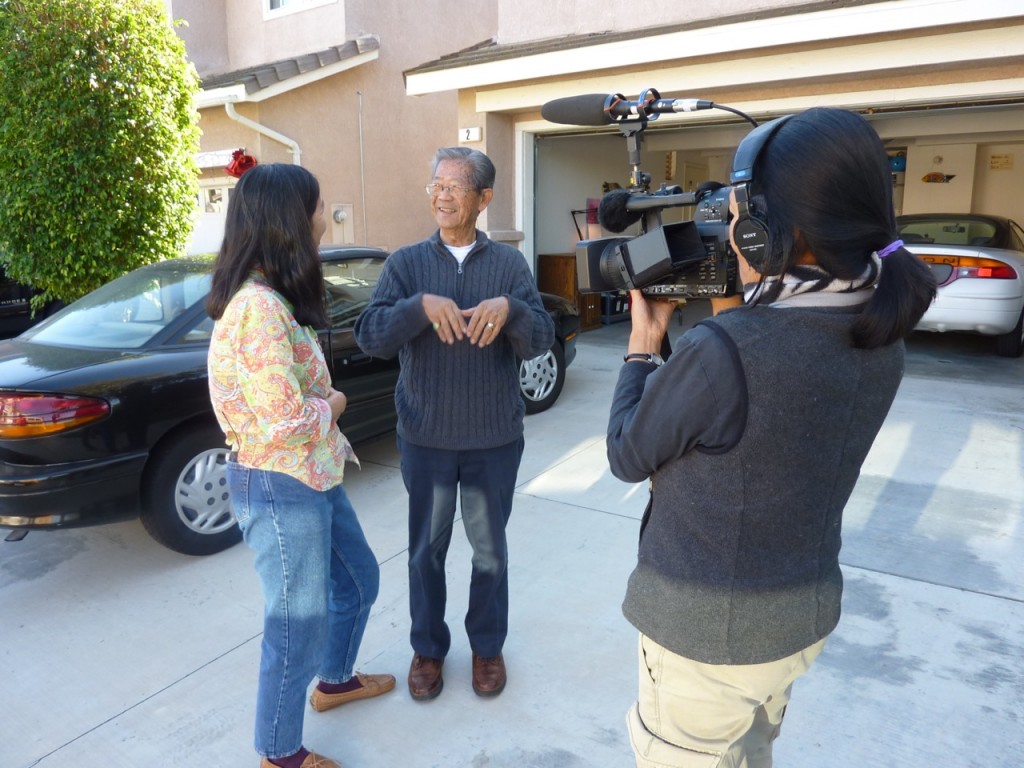
Ann Kaneko films FINDING KUKAN director Robin Lung meeting with Li Ling-Ai’s nephew Andrew Li.
I hoped to find out more information from Andrew about Ling-Ai’s connections in China at the time. Though I was able to gather some valuable information from my interview, the 5 days in LA turned out to be about so much more — a lot of it behind the scenes stuff that will never make it into the documentary.
Getting to know the talented filmmaker Ann Kaneko was one of the unexpected bonuses of the trip. Thanks to generous donations from early FINDING KUKAN supporters, I was able to hire Ann for a couple of days as my LA Director of Photography. Having a dp with a real interest in the project and experience with both editing and being a character in her own films was invaluable.
Witnessing Ann balancing her dedication to her work with the demands of raising her 8‑month old daughter Ceiba was a real inspirational shot-in-the-arm too.
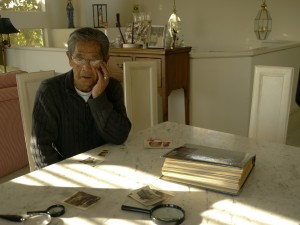
Andrew Li inspects photographs
As I lunched with Andrew Li, his daughters Portia and Quincy, and his wife Gilda I got a sense of the rich life Li Ling-Ai had beyond KUKAN and the profound ripple effect that personal stories can have through time and space.
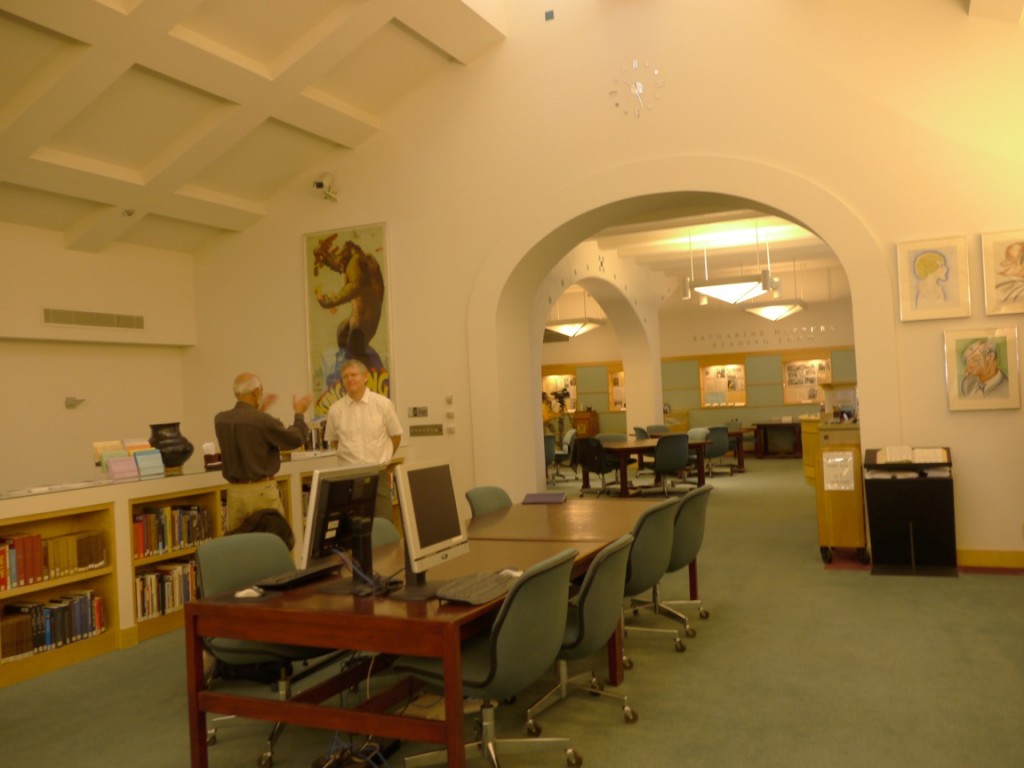
John Zainer talks to Ed Carter in front of the $500,000 King Kong poster that decorates the Margaret Herrick Library’s reading room.
Filming B‑roll scenes of Ed Carter at the Margaret Herrick Library introduced me to this gorgeous building and amazing film history resource for the first time (I am already thinking of excuses to return to spend more leisurely hours there).
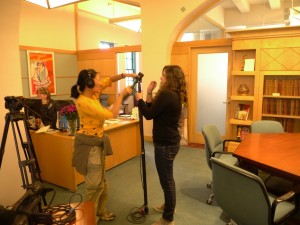
Ann Kaneko and Rebecca Bozzo prep for a shoot at the Margaret Herrick Library
It also gave me an excuse to hook up with the perennially upbeat Rebecca Bozzo again. Becca is a dedicated young filmmaker who shares a passion for old movies and has been a FINDING KUKAN supporter from almost day one.
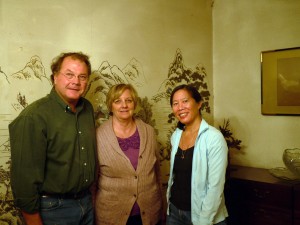
Dan & Denise Levenick with Robin Lung
Dan & Denise Levenick invited me to their home in Pasadena to view their mother’s home movies and photographs of 1930s Hawaii. Besides giving me another reason to marvel at the generosity and kindness of strangers, Dan and Denise provided me with precious “before-my-time” knowledge of my home town.
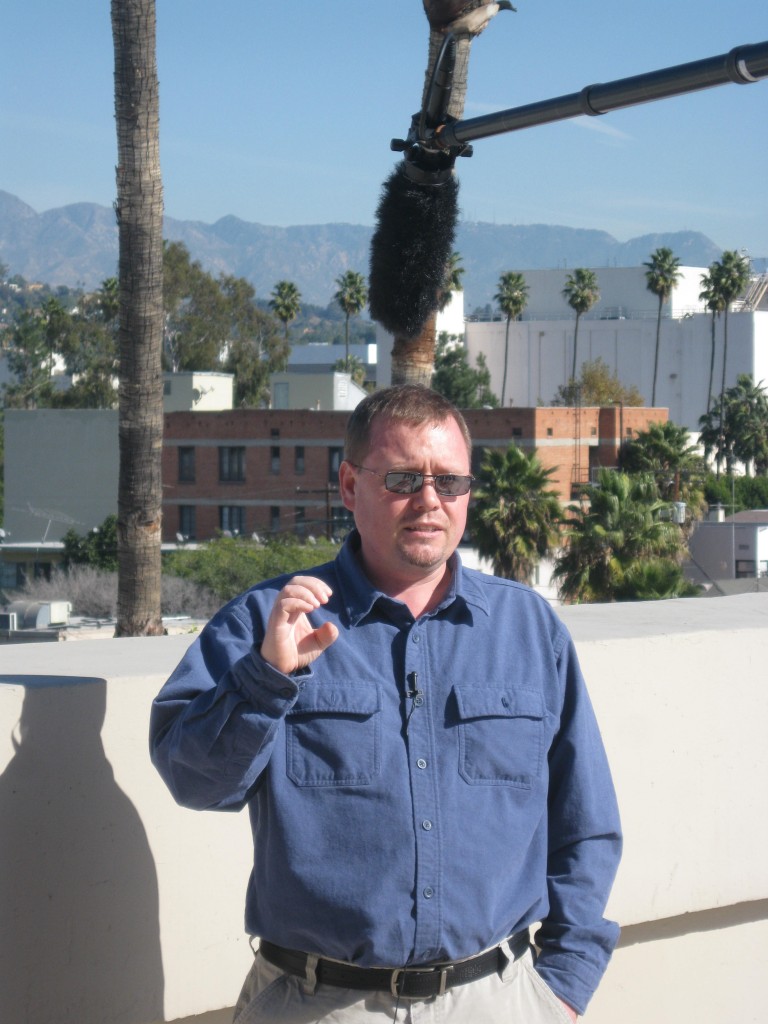
AMPAS Preservationist Joe Lindner describes how curled the KUKAN film print is.
Talking to AMPAS Presrevationist Joe Lindner about the arduous process of restoring KUKAN gave me new insights into the precious nature of old film, the historic value that even old home movies have, and the galling number of films that have been destroyed by time.
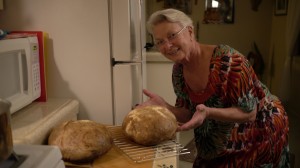
Ille-Heid Zainer and her fresh baked bread.
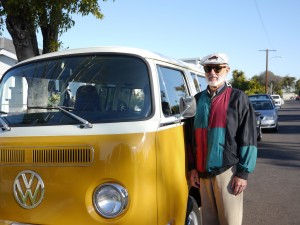
John Zainer’s 1971 VW Van was the perfect LA production vehicle.
Finally my hosts in LA, John and Ille-Heid Zaner, provided me with an intimate view of what living in LA can be like, inviting me to neighborhood parties, providing home-cooked meals after long days of shooting, chauffering me around in vintage vehicles, and sharing Ille’s sister Elke’s amazing Christmas cookies with me.

Elke’s Cookies
The result is that after my 5‑day production shoot in LA, a city that I once had a very low opinion of, I can’t wait to go back.
December 1 to 31, 2011 — Producer/Director Robin Lung Featured on Career Changers TV
Although I’m more comfortable being behind the camera than in front of it, I agreed to be profiled on OC 16’s Career Changers TV show in order to get the word out about FINDING KUKAN. Producer Rich Figel and Cameraman/Editor Stan Chang managed to boil my life of job-hopping down to a succinct 4 minutes or so. Even better, the lead in and out of the piece made people really want to see the work-in-progress trailer and learn more about KUKAN. The show airs through December on digital channel 16 or 1016 in Hawaii. The show is rebroadcast Fri 2:30pm, Sat 6:30pm, Sun 12:30am, Mon 9:00am, and Wed 2pm and Thur 8:30pm through December. If you can’t catch it, here is a low resolution version.
You can see the nice lead up to the trailer here. And a fabulous article Rich wrote about “The Mystery of Li Ling-Ai” here.
July 23, 2011 — A Visit to the New York City Office of the National Archives
When I first started checking to see if Li Ling-Ai could have been the real life inspiration for the fictional detective Lily Wu, I tracked down some of her travels through boat records that are available on Ancestry.com. One of the Ancestry records was a New York Exclusion file that listed the date of her arrival in San Francisco. Going over the notes on the record again, I saw that Li Ling-Ai’s file included an interrogation. Since the interrogation occurred only a year before Li Ling-Ai met Rey Scott and conceived of making the movie KUKAN, I was anxious to read through the interrogation to see if it contained any clues. In July I finally got a chance to visit the NYC office of the National Archives where Li Ling-Ai’s Exclusion file is located.
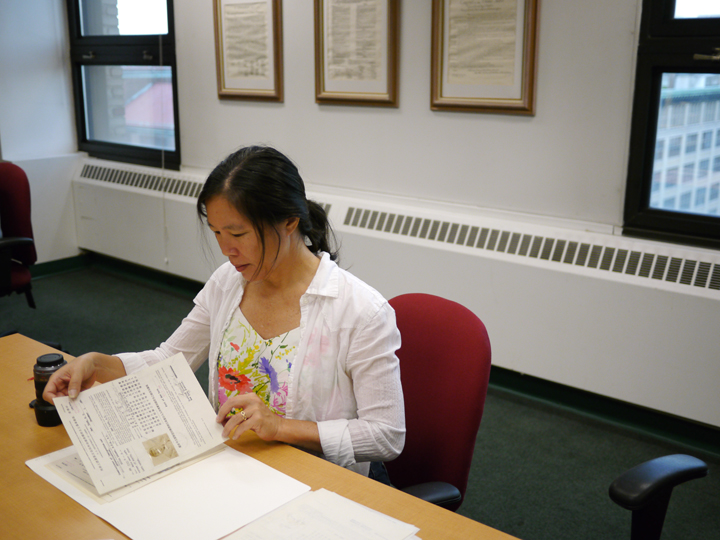
Robin Lung examines Li Ling-Ai’s Chinese Exclusion File at the NYC office of the National Archives
It was amazingly well-preserved, and I had a lot of mixed emotions while examining it. On the one hand, I was excited to see a photograph of Li Ling-Ai in the file that I had never seen before and letters that were hand-written by her. Handling the documents gave me a very visceral connection to the past and to this woman that I have been pursuing for the last couple of years.
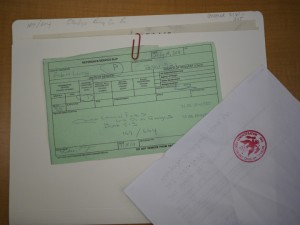
Li Ling-Ai’s Chinese Exclusion File
On the other hand I was appalled that this file existed in the first place. I had to think about the blatant anti-Chinese discrimination that led to The Chinese Exclusion Law — the reason for the creation of the file I was touching. I was astounded that a U.S. citizen like Li Ling-Ai (she was born in Hawai‘i in 1908 when it was already a U.S. Territory) who had a U.S. Passport (documented in the file) would have to spend days at the NYC Immigration Office in order to get a re-entry form that would make it possible for her to come back to her own country after leaving it! And that she would have to sit through an interrogation to prove that she was authentic despite all the other documentation she had made me even more indignant.
As a researcher, I was thankful to be able to access the revealing information in the file and draw both the positive and negative energy from it. So I have to acknowledge the hard work that goes into indexing, storing and retrieving these records. That day at the Archives I witnessed two volunteers who were laboriously going through files and entering data into laptops so that others like me could find information about ancestors and characters from the past. I wish I had gotten their names and taken photos of them if only to pay a small homage to all the others like them who have helped forward my investigation.
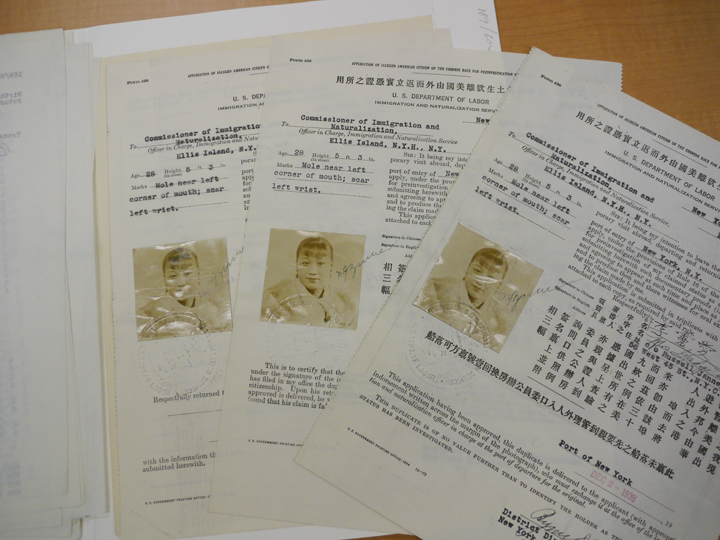
Documents in Li Ling-Ai’s Chinese Exclusion File
July 11–16 Road Trip to Kennesaw & Tallahassee
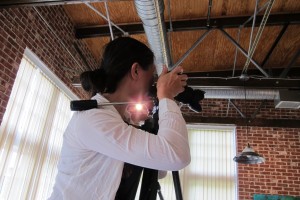
Director Robin Lung films in Georgia
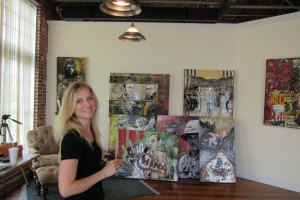
Michelle Scott with a few paintings from her KUKAN series
As I packed my suitcase I worried that since Michelle and I didn’t really know each other the trip could be a total fiasco. Fortunately Michelle and the rest of the Scott family were so openhearted and supportive that I felt instantly comfortable after meeting them and the trip was more successful than I could have imagined. Witnessing Michelle’s passion for her art and her commitment to preserving her grandfather’s legacy infused me with new energy to face all of the tedious things that go along with documentary filmmaking (like logging and transcribing footage and writing grant proposals).
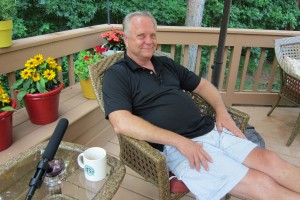
Ray Scott relaxes before interview.
I realize that gaining access to people and places outside of my everyday comfort zone is one of the immeasurable rewards of this process. I’m looking forward to what the next road trip will bring me.
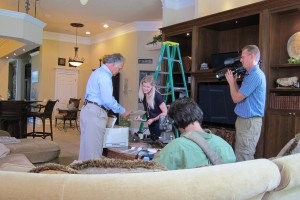
Mark Scott and Michelle Scott examine Rey Scott’s cameras as cameraman Kevin Deyo films the scene.

